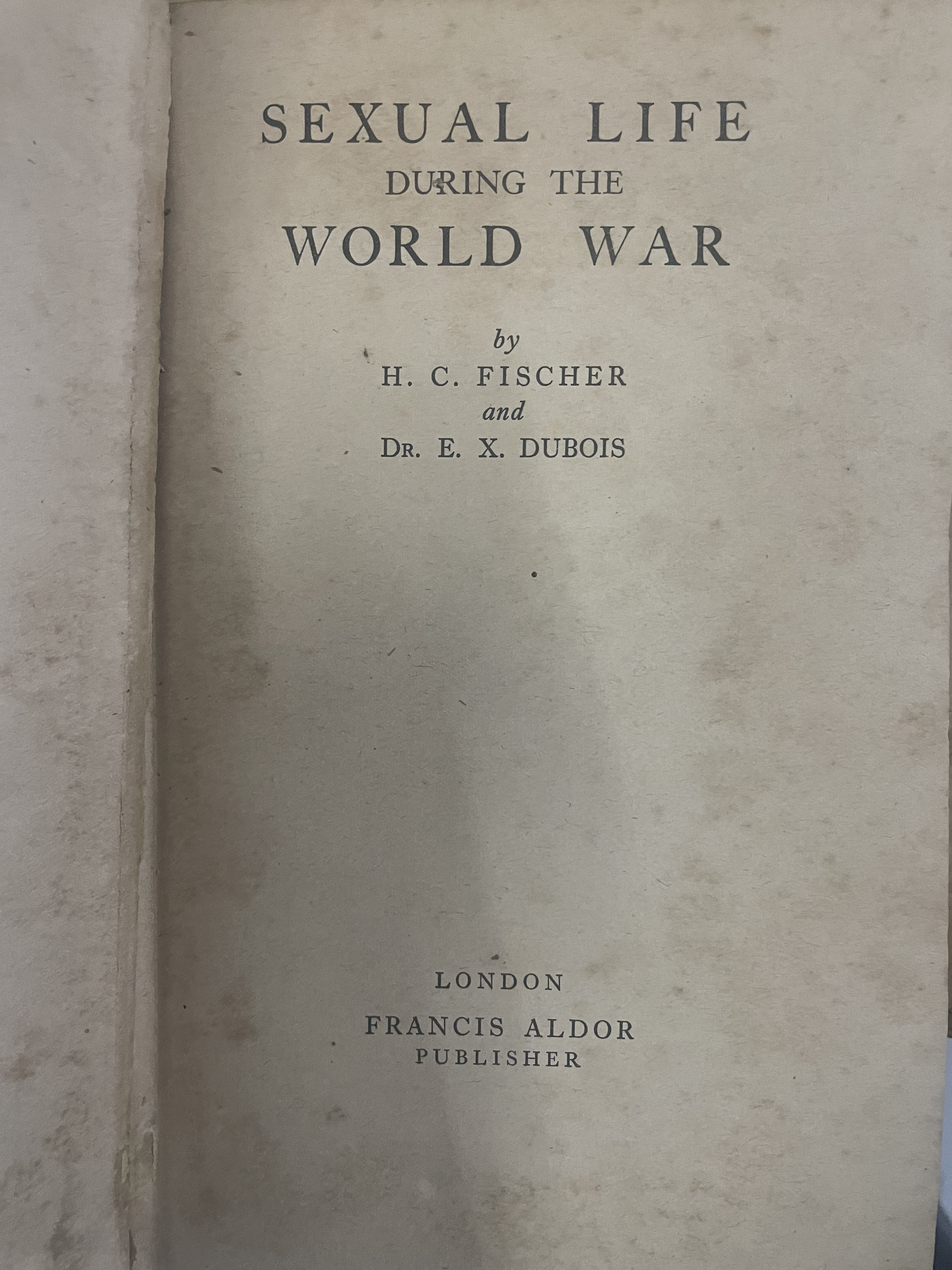Sexual Life during The World War

About
Summary
Exquisite
TOC
Details
Related
URL
Images
Overview
Sexual Life During the World War by H.C. Fischer and Dr. E.X. Dubois, published in 1937, explores the multifaceted aspects of sexual behavior, morality, and health during World War I. The book delves into how these factors intertwined with patriotism, national security, and the overall war effort. It examines the attitudes, regulations, and discourses surrounding sex during the war, providing a comprehensive view of a previously under-explored area of wartime experience.Sexual Life During the World War investigates the ways in which sexual behavior and morality were linked to patriotism and the pursuit of victory in World War I. It analyzes how the war shaped people's sexual behavior and their attitudes toward it, as well as how sexual behavior was seen to impact the war effort directly. The book employs a variety of contemporary sources, offering insights into the views of the military, government, press, medical profession, clergy, and individuals who commented on sexual mores and venereal disease. The term "venereal disease" during wartime pertained to syphilis, gonorrhea, and soft chancre.
The book uses a range of contemporary sources, including parliamentary debates, official records, medical records, memoirs, and the press, to assess wartime attitudes. It aims to offer a broad and comparative study, drawing different conclusions from previous histories. The study considers attitudes to heterosexual, married, and procreative sex alongside problematic sexualities, practices, and ill-health, examining behaviors representative of the majority of the population. The book asserts that aligning morality with patriotism was present in popular, religious, and journalistic arguments and deeply entrenched within the legislation and official discourses of the British state.
Importance of Book
Historical Insight: It provides a detailed examination of a neglected aspect of World War I, shedding light on the social and cultural dimensions of the conflict.
Interdisciplinary Approach: The book combines historical analysis with insights from sociology, gender studies, and medical history, offering a multifaceted perspective on the topic.
Source Material: By utilizing a wide range of contemporary sources, the book offers a rich and nuanced understanding of wartime attitudes and behaviors.
Challenging Conventional Wisdom: The book challenges traditional narratives of World War I by exploring the complex relationship between sexuality, morality, and the war effort.
Key Themes
Gender Roles: The book investigates the construction of masculinities and femininities during the war and how they were shaped by wartime experiences and expectations.
Race, Nation, and Patriotism: It examines the intersections of race, nation, and patriotism in shaping attitudes toward sex and morality during the war.
State and Individual: The book explores the relationship between the state and the individual, particularly regarding the regulation of sexual behavior and the protection of public health.
Military Policy: It analyzes governmental and military policies and laws regarding sex and venereal disease among military personnel and civilians.
Home Front Morality: The book examines responses to sexual behavior on the home front, which was believed to be a danger to national security or the war effort.
Marriage and Procreation: It addresses wartime opinions about marriage, illegitimacy, procreative sex, and the moral and patriotic demands placed upon women.
Soldiers' Experiences: The book investigates attitudes to sex as represented in soldiers' memoirs and constructions of masculinities.
Moral and Medical Crises: It discusses contemporary reactions to perceived moral and medical crises and explores solutions advocated for these problems.
Cultural Significance
Sexual Life During the World War holds cultural significance by revealing the social anxieties and moral concerns of the World War I era. It illustrates how the war influenced cultural norms and values related to sexuality, gender, and national identity. The book contributes to a deeper understanding of the cultural context in which the war was fought and its lasting impact on society.
Effects on Society
Changing Attitudes: It sheds light on how the war influenced attitudes toward sex, morality, and gender roles, contributing to broader social changes in the 20th century.
Public Health Policies: The book's examination of venereal disease control efforts informs the history of public health policies and the role of the state in regulating sexual behavior.
Historical Understanding: It enhances our understanding of the complexities of wartime experiences, challenging simplistic narratives and promoting a more nuanced perspective
Conclusion
Sexual Life During the World War by H.C. Fischer and Dr. E.X. Dubois offers a comprehensive and insightful examination of the complex relationship between sex, morality, and the war effort during World War I. By drawing on a wide range of contemporary sources and exploring key themes such as gender roles, race, nation, and the role of the state, the book contributes to a deeper understanding of the social and cultural dimensions of the conflict. Its cultural significance lies in its revelation of the social anxieties and moral concerns of the era, while its effect on society is to promote a more nuanced and informed perspective on the history of World War I.
Title
Sexual Life during The World War
Author
H C Fischer and Dr E X Dubois
Name of Publisher
Fracis Aldor Publisher London
Publish Date
1937
Subject
A detailed examination of how World War I affected sexual behavior and attitudes
Vintage
1901-1947
Edition
First
Number of Pages
485
Category
Literary
Sub Category
Social Sciences
Rarity
RARE
